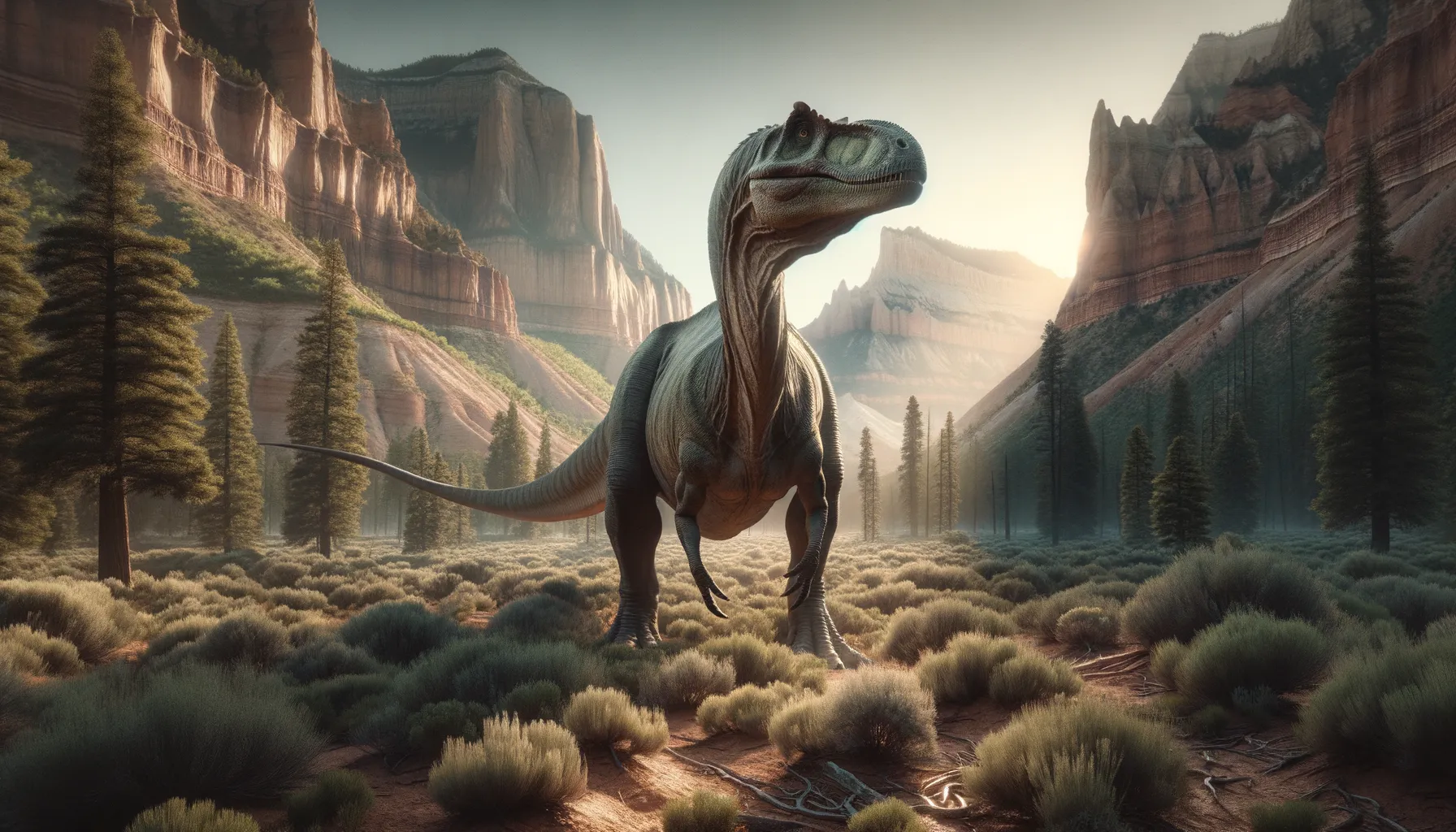
Venenosaurus
A quiet giant of the Cretaceous era.
Period
Cretaceous
Length
Could grow up to 11 meters long.
Height
Estimated up to 3 meters at the shoulder.
Weight
Estimated at around 2 to 3 tonnes.
Venenosaurus was a mid-sized sauropod dinosaur known from partial skeletal remains found in the Cedar Mountain Formation, Utah. It roamed the Earth during the Early Cretaceous period. Its discovery provided insights into the diversity and evolutionary pathways of sauropods in North America during this era. Known for its long neck and sturdy limbs, Venenosaurus added crucial knowledge about niche adaptation and geographical distribution of sauropods.
Diet
Venenosaurus was herbivorous, feeding on a variety of plant life. Its long neck allowed it to reach high vegetation, possibly including conifers and cycads.
Hunting
As a herbivore, Venenosaurus did not hunt. It likely foraged in groups for safety and efficiency.
Environmental challenges
Venenosaurus faced periods of climatic shifts, affecting food availability. The changing landscapes due to tectonic shifts likely influenced migratory patterns. Droughts and competition for food sources posed significant challenges.
Speed
Relatively slow-moving.
Lifespan
Could live up to several decades.
First discovery
Discovered in 1998 in Utah, USA.
Fun Facts
- Venenosaurus, whose name means 'poison lizard', is actually not poisonous at all. The name comes from where its fossils were found, the Poison Strip in Utah.
- Venenosaurus lived during the Early Cretaceous period, around 135 to 125 million years ago.
- It was a sauropod, which means it was a long-necked dinosaur belonging to the same group as the famous Brachiosaurus and Diplodocus.
- Despite its massive size, Venenosaurus was a herbivore, feasting on plants and trees for sustenance.
- Venenosaurus is known from only a few fossil bones, making it one of the less understood dinosaurs.
- The discovery of Venenosaurus has provided valuable insights into the diversity of sauropods in North America during the Cretaceous period.
- Venenosaurus may have lived in a rich ecosystem with rivers and abundant vegetation, which is quite different from the dry landscape of its fossil site today.
Growth and Development
Like other sauropods, Venenosaurus likely experienced rapid growth rates in its early years. It might have reached maturity within a few decades. Juveniles would have relied on their size for protection as they grew larger.
Habitat
Venenosaurus inhabited semi-arid regions with occasional forested areas. It roamed in regions that had access to water sources essential for its survival. The landscape was dotted with ferns and conifers, providing ample food.
Interaction with other species
Venenosaurus shared its habitat with various other herbivorous species. It likely coexisted with predators like dromaeosaurids and potential competitors that shared similar diets.
Natural lifespan
Venenosaurus may have naturally lived up to 60–80 years if it avoided predators and disease.
Reproduction
Like other dinosaurs, Venenosaurus likely laid eggs in nests. Females might have laid multiple eggs per clutch, possibly covering them for protection.
Social behaviour
Venenosaurus may have engaged in herd-like behavior for protection. Living in groups would have helped in deterring predators and provided care for the young.
Fossil locations
Fossils of Venenosaurus were predominantly found in southeastern Utah. The Cedar Mountain Formation provided the primary evidence and location of its discovery. These fossil beds have been crucial for understanding sauropod diversity in North America.
